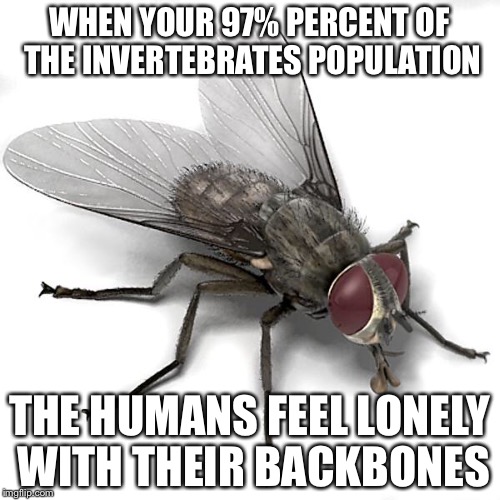2 Depressing name explained. Invertebrates & Vertebrates.
STARLOG.COM Invertebrates X Vertebrates
"2 Depressing names explained. Invertebrates & Vertebrates. "
When exploring the animal kingdom, one of the most fundamental distinctions is between invertebrates and vertebrates. These two groups encompass a vast array of species, each with unique characteristics and adaptations. Let’s delve into the intriguing differences and examples of each!
Invertebrates: The Backbone-less Wonders than is not any less cool.
Invertebrates are animals that lack a backbone. Instead, they may have an exoskeleton AKA Hard skin, or be entirely soft-bodied. This group is incredibly diverse, making up about 97% of all animal species on Earth. Here are some notable examples:
- Sponges: Simple, porous animals that filter water to obtain food. Unbeknownst to most, the majority of Sponges actually live underwater and are crucial for global oxygen production. We ain´t saving the ocean. The ocean is saving us!
- Worms: Including flatworms, roundworms, and segmented worms, these creatures have elongated, soft bodies but look horribly disgusting.
- Echinoderms: Such as starfish, which have a unique water vascular system and radial symmetry. Don´t worry I didn´t understand that scientific crap either.
- Cnidarians: Like jellyfish, known for their stinging cells used for capturing prey. They are more brutal than my school cafeteria lady.
- Mollusks: Including snails, which often have a hard shell for protection. Unlike other animals that have an exoskeleton. The snail is quite special. The exoskeleton grows with the snail! Usually, animals will throw away their old shell and grow new ones.
- Arthropods: This group includes crustaceans, arachnids, insects, and myriapods. They have segmented bodies AKA hard skin but it's in section. Think about iron man´s suit but it´s on a freaking spider. Fun fact: Insects have 6 legs. arachnids have 8.
Vertebrates: The Backbone Bearers
Vertebrates, on the other hand, are animals with a backbone and an internal skeleton. This structural feature allows for greater mobility and complexity. Here are some examples of vertebrates:
- Fish: Aquatic animals that breathe through gills and have fins for swimming. You probably see them at your dinner table more often.
- Amphibians: Such as frogs, which can live both in water and on land during different life stages. I have an entire blog post about them read it here! Amphibians, oh wait it´s a frog. (sophiasstarlog.blogspot.com)
- Birds: Feathered creatures capable of flight, with beaks and laying hard-shelled eggs. The closest things we have to a dinosaur.
- Reptiles: Including snakes and lizards, which have scaly skin and lay soft-shelled eggs instead of hard shelled.
- Mammals: Warm-blooded animals with hair or fur, does that ring a bell? You´re a mammal! Which means you are lucky enough to be in the quality over quantity section.
Conclusion
The distinction between invertebrates and vertebrates highlights the incredible diversity of life on our planet. Invertebrates, with their myriad forms and adaptations, dominate in terms of species count. Vertebrates, though fewer in number, exhibit complex behaviors and advanced physiological traits. Together, they paint a rich tapestry of the animal kingdom, showcasing the wonders of evolution and adaptation.
1: Wikipedia - Ryggradslösa djur
2.: Stefi´s presentation
3: Begreppa (Which tried to teach me false things :(

Comments
Post a Comment